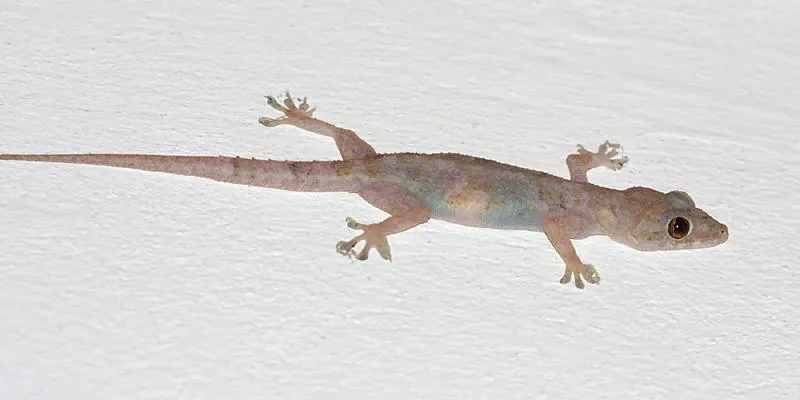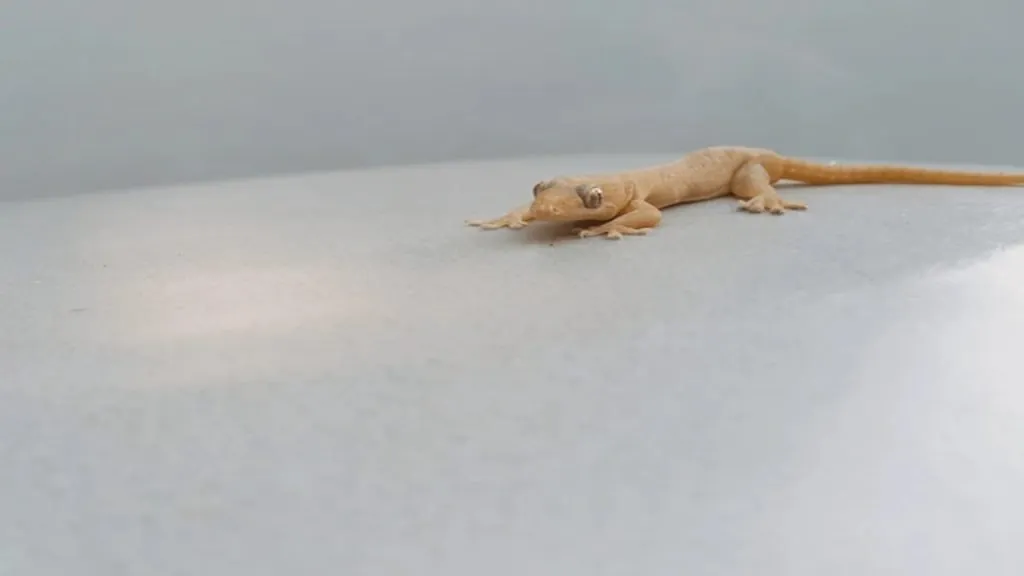As an Amazon Associate I earn from qualifying purchases.
Do you have a house gecko as a pet? If so, you may be wondering what they like to eat. In this blog post, we will provide a guide to the diet of house geckos.
House geckos are omnivorous animals, which means that they can eat both plants and animals.
However, their diet typically consists of insects and other small invertebrates.
We will discuss some of the most common food items that house geckos eat in this blog post.
What Do House Geckos Eat All Year-Round?

This is a question that many people ask. House geckos are small lizards that are found in warm climates all over the world.
They are common pets because they are easy to care for and they do not require a lot of space. House geckos typically eat insects and other small invertebrates.
However, they will also occasionally eat fruits and vegetables. The most common food items that house geckos eat include:
1. Insects
Ants, cockroaches, spiders, flies, beetles, crickets, grasshoppers, caterpillars, earwigs, silverfish, and moths.
2. Arthropods
Other arthropods like small beetles, crickets, mealworms, waxworms, silkworms, fruit flies, pinhead crickets, and springtails are tasty treats for house geckos.
These bugs provide the essential nutrients that geckos need to grow well and stay strong.
3. Commercial Gecko Diets
In captivity, you can also feed your house geckos commercial gecko diets that you can find in pet stores.
These diets come in different forms like canned or freeze-dried insects, which can be given as an occasional treat or when live insects aren’t available.
Just make sure they’re the right size for your gecko and don’t contain any harmful additives.
Another is Powdered gecko diets are specially made for geckos and can be mixed with water to make a paste.
However, it’s best to use them sparingly and follow the advice of a veterinarian or reptile expert.
House geckos love to hunt for bugs, using their sharp eyes and quick moves to catch them inside and outside.
When you keep them as pets, it’s important to give them different kinds of food so they stay healthy.
What Do Baby House Geckos Eat: Baby House Gecko’s Diet
Baby house geckos and adult geckos eat similar things, but baby geckos need smaller bugs because they’re too small to eat big ones as adult geckos do.
When they’re born, they’re too little for big bugs like large crickets or mealworms.
So, they should start with tiny bugs like fruit flies, pinhead crickets, and springtails because those have the right stuff they need to grow.
Because they burn energy quickly, they need food every day to grow right but don’t force them to eat. Let them learn to hunt by themselves.
As they get bigger over a few weeks, they can eat slightly bigger bugs like small crickets, fruit flies that can’t fly, and baby spiders.
Giving them different kinds of food is important so they stay healthy and don’t get picky.
Sometimes sprinkle their bugs with calcium and vitamin powder a couple of times a week to help their bones grow right.
Before you give bugs to your gecko, make sure they’re healthy bugs by feeding them fruits and vegetables. This makes sure your gecko gets all the vitamins and minerals it needs.
Even though they get water from their food, they still need a water bowl to drink from. This makes them feel like they’re at home and helps them digest their food.
If you’re worried about your baby gecko’s health or if it’s eating enough, talk to a vet.
Keep an eye on how much they eat and adjust how much food you give them so they don’t have extra bugs left over that could hurt them.
The Overview of the Species
The house gecko, scientifically named Hemidactylus frenatus, is a small lizard that belongs to the Gekkonidae family.
These lizards are well-known for being able to live in many different places and can be found all over the world in warm areas.
House geckos are usually about 3 to 6 inches long and have skinny bodies with big eyes that don’t have lids.
They can climb up walls and ceilings because they have special pads on their toes.
House geckos come out at night to look for bugs and other small creatures to eat. They like to rest in warm spots during the day.
Because they’re tough and can live in cities, you can often find them in houses where they help keep the bug population down.
The Habitat of the House Geckos
House geckos usually live in warm places like tropical and subtropical areas all over the world.
You can often find them in cities, like in houses, buildings, and other human-made places.
They like places with lots of hiding spots and where they can find insects and small creatures to eat.
House geckos are good at living in different places, whether it’s natural areas or places changed by people.
They’re known for being able to climb up walls, ceilings, and other vertical surfaces because of their special toe pads.
Overall, house geckos can live in many different places as long as they have warmth, shelter, and food.
A Guide on Housing the Common House Gecko: A Care Guide
1. Choose a Suitable Enclosure
Make sure your common house geckos have a good place to live. Get a terrarium or vivarium with enough airflow and space for climbing.
A 10-gallon tank is usually fine for a few geckos, but if you have more, get a bigger one. Make sure the enclosure closes securely to keep your geckos safe.
Use strong materials that can handle their needs. This will give your geckos a comfy and safe home where they can be happy and explore.
2. Provide Substrate
When setting up the bottom of the tank for your gecko, go for materials like coconut fiber, reptile carpet, or even paper towels.
These are easy to clean and won’t harm your gecko.
3. Temperature and Lighting
Keep the temperature right in your gecko’s home. Make sure one side of the tank is around 85°F for basking, while the other side is cooler at about 75°F.
Use a heat mat or ceramic heat emitter to keep them warm, and give them UVB lighting so they can absorb calcium and stay healthy.
4. Hideouts and Climbing Structures
Create hiding places and climbing spots for your geckos by adding rocks, branches, and fake plants in their habitat. This gives them places to feel safe and explore.
5. Hydration and Humidity
Make sure your geckos stay hydrated and the air isn’t too dry. Put a shallow dish of water in their enclosure for drinking and to keep the humidity right.
Spritz the tank lightly every day to keep the air moist, like they’d have it in the wild.
6. Feeding and Diet
When it comes to feeding your geckos, give them a variety of live insects that match their size, like crickets, roaches, flies, and moths.
Make sure to dust these insects with calcium and vitamin D3 powder before feeding them to your geckos.
Adults can eat every 2-3 days, but hatchlings need to eat every day. Keep an eye on their appetite and adjust their feeding schedule accordingly.
Always have a clean, shallow water dish available so your geckos can stay hydrated.
When choosing your gecko, remember that while the common house gecko is easy to find, there are other options to explore if you’re looking for specific traits:
- Leopard Gecko (Eublepharis macularius): These geckos are more ground-dwelling, calm, and come in various bright colours. They prefer slightly drier environments compared to common house geckos.
- Crested Gecko (Rhacodactylus ciliatus): Active at night and prefers climbing, known for their unique “eyelashes.” They require high humidity and have specific dietary needs.
- Gargoyle Gecko (Rhacodactylus auriculatus): Similar to crested geckos but needs cooler temperatures and more specialized care.
Consider these options if you’re interested in different appearances or temperaments for your pet gecko.
Before getting a gecko, make sure you learn about what they need. It’s best to adopt from a trusted breeder or rescue group.
By doing your research and creating a good home for your gecko, you can give them a happy and healthy life in your home, whether it’s a common house gecko or another type you choose.
Handling Your House Gecko

When handling your geckos, be gentle and handle them with care. Don’t grab or squeeze them too hard because it can stress them out or hurt them.
Let your gecko get used to you being around before you try to handle them. Start with short times and slowly make them longer as your gecko feels more relaxed.
Always support your gecko’s body with your hands and never pick them up by their tail, as it could hurt them.
Remember to wash your hands before and after handling your gecko to keep them and you healthy.
Common Health and Behavior Problems
1. Metabolic Bone Disease (MBD): This happens when geckos don’t get enough calcium, vitamin D3, or the right UVB light.
It makes their bones weak, they may shake, and moving becomes hard.
2. Respiratory Infections: Geckos can get sick if their tank isn’t warm enough or doesn’t have good airflow.
Signs are wheezing, breathing with their mouth open, and stuffy noses.
3. Parasites: Geckos can get bugs inside or on their skin that make them sick. They might lose weight, seem tired, or you can see bugs on their skin.
4. Impaction: Eating stuff like bedding or other things that aren’t food can block a gecko’s stomach and cause health problems.
5. Overheating or Hypothermia: If a gecko’s home is too hot or too cold, it can mess with their body’s balance and make them sick.
6. Shedding Problems: Geckos should peel off their old skin all at once. If they can’t do it properly, it might cause leftover skin and problems with their eyes or toes.
7. Stress-related Behaviors: Geckos might act stressed by hiding a lot, not eating, or being mean if they feel scared or uneasy in their home.
To keep your gecko healthy, make sure their home is just right.
This means keeping the temperature, humidity, and lighting at the right levels, and feeding them a good diet.
Watch your gecko closely and check for any signs they might be sick or acting strange.
If you notice anything worrying, talk to a vet who knows about reptiles.
Finding and fixing problems early can keep your gecko from getting sicker and help them stay healthy.
Conclusion
In conclusion, house geckos are easy to care for pets that can provide you with years of enjoyment.
They are not picky eaters, and their diet consists mostly of insects. However, they also need access to water and should be kept in a warm, humid environment.
House geckos are not poisonous or dangerous to humans and other animals.
If you are considering getting a pet gecko, be sure to do your research to find the perfect one for you! Thanks for reading!
FAQ’s:
Yes, house geckos benefit from UVB light because it helps them absorb calcium, which is important for their bone health.
House geckos prefer basking temperatures around 85°F to 90°F to stay warm and healthy.
House geckos thrive in humidity levels ranging from 50% to 70%. This helps them shed their skin and stay hydrated.
House geckos do well with substrates like coconut fiber, reptile carpets, or paper towels.
These options are safe, easy to clean, and help maintain proper humidity levels in their habitat.
Amazon and the Amazon logo are trademarks of Amazon.com, Inc, or its affiliates.

